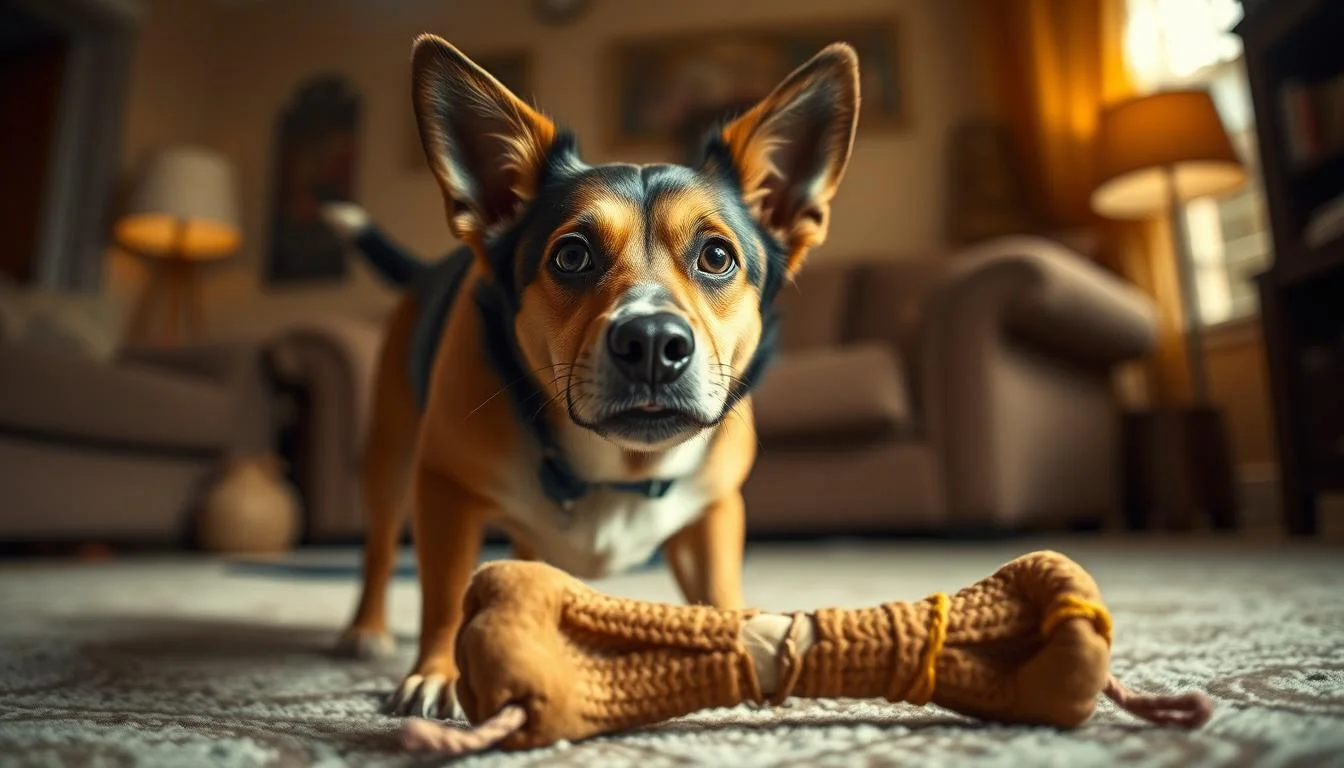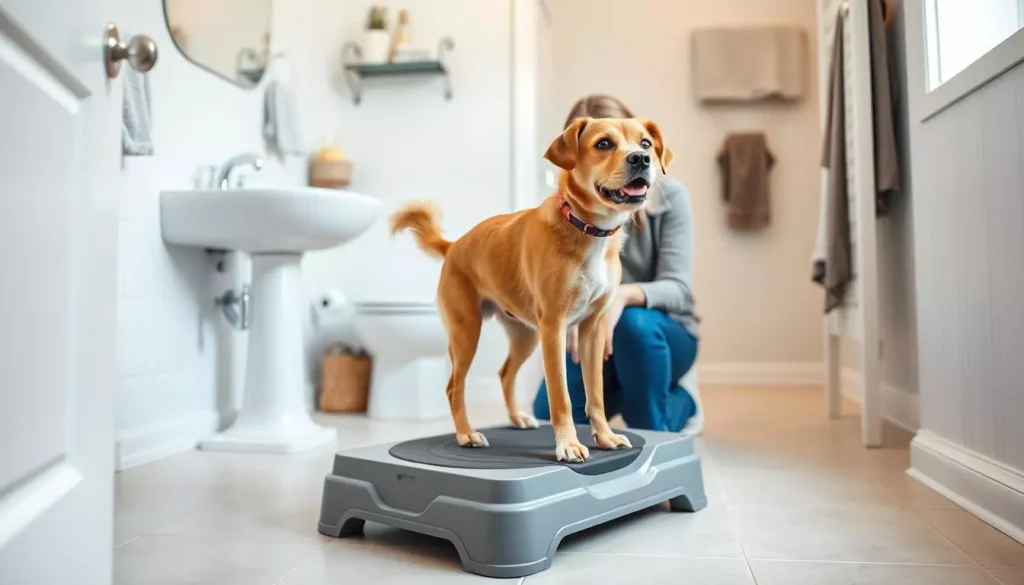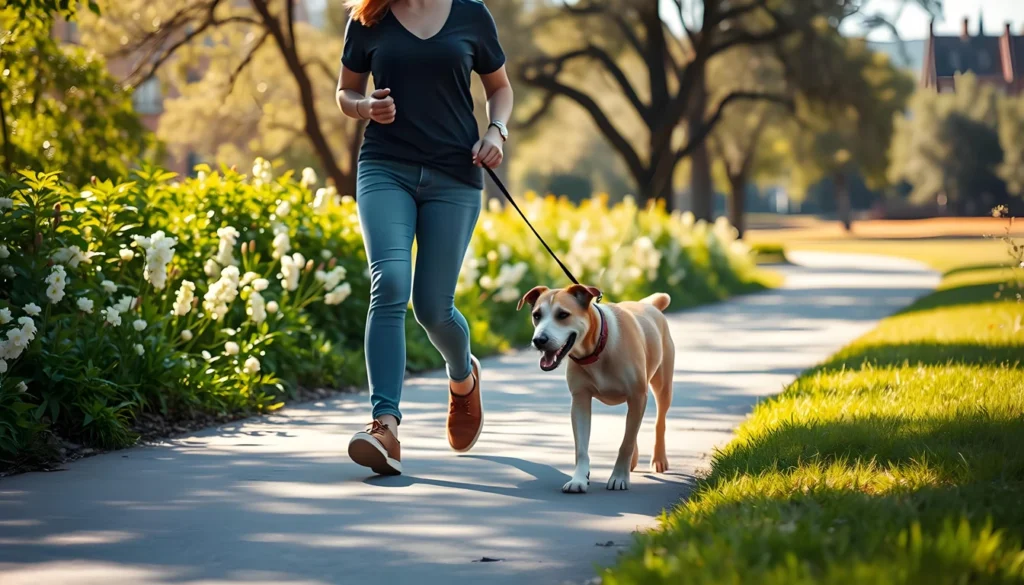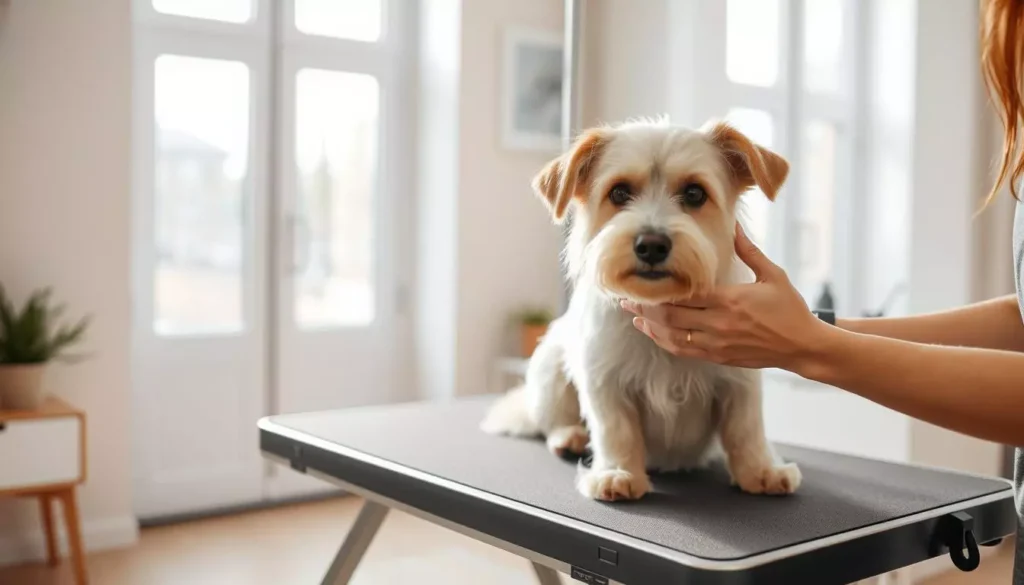I remember the first time my Labrador growled over a bone. My niece was right there. It was a scary moment. It made me realize how fast things can go wrong.
I wanted to find safe ways to stop this. I wanted our home to be safe again.
This guide is for dog owners in the U.S. It's for new families and those with kids or older adults. I'll share how to assess, manage, and positively change your dog's behavior.
It's all about keeping everyone safe. Early steps are key. If we don't act, things can get worse.
I'll share methods backed by science. We'll talk about changing the environment and using positive training. Puppies and adult dogs can both learn with the right approach.
I'll tell you when to try things yourself. And when it's time to get help from a pro. This keeps everyone safe.
Key Takeaways
- Possessive behavior in dogs can escalate if unmanaged; early action reduces risk.
- I will show practical, safety-first steps for how to correct possessive aggression in dogs.
- Possessive dog rehabilitation favors counterconditioning and environment management over punishment.
- Puppies are easier to shape, but adult dogs can improve with consistent work.
- Know when to involve a certified trainer or veterinary behaviorist for complex cases.
Understanding Possessive Aggression in Dogs: What Resource Guarding Looks Like
Many owners are puzzled when a calm dog suddenly becomes stiff around a toy or bowl. This behavior is called resource guarding. It's when a dog tries to keep something away from others, whether it's an object, a space, or a person. The signs can range from subtle to very clear, like biting.
I've broken this topic into three parts to help you spot early signs and act safely. Recognizing these cues early makes training and correcting possessive aggression in dogs more effective.
Common signs of possessive behavior in dogs
Watch for vocal warnings like growling, a hard stare, or raised lips. Dogs might bare teeth, lunge, air-snap, chase, or bite if pushed. Mild signs include freezing, side-eye, a braced posture, eating faster, hoarding, or taking an item and moving away. These signals give you a chance to change the outcome before things get worse.
Difference between mild guarding and true aggression
Mild guarding often shows as warnings and avoidance. A dog might growl or tense without wanting to harm. True aggression, however, involves clear attempts to injure: lunging with force, repeated bites, or directed attacks. True aggression needs an immediate safety plan and professional help from a certified behaviorist or trainer.
Typical triggers: food, toys, space, and people
Common triggers are food and treats, food bowls (even empty ones), bones and chews, and favorite toys. Dogs guard stolen items like socks or napkins, specific spaces such as beds, couches, or crates, and sometimes a person they value. Leash reactivity or fear may look like guarding toward people, so careful assessment is essential.
| Trigger | Mild Signs | Severe Signs | Why It Happens |
|---|---|---|---|
| Food & treats | Fast eating, tense posture | Snapping, guarding bowl | High value, competition |
| Toys & chews | Hoarding, moving away | Lunging when approached | Possession value, play-resource |
| Spaces (bed, couch) | Freezing, side-eye | Charging, biting to defend | Territorial comfort |
| People (owner or guest) | Blocking access, tense attention | Biting to keep person close | Attachment or jealousy |
Why Dogs Develop Possessive Behavior: Causes and Risk Factors
I see possessive behavior for many reasons. Some dogs have strong instincts from their lineage. Breeds with guarding or strong resource-focused drives can show early signs, making genetics and breed predispositions an important factor to check.
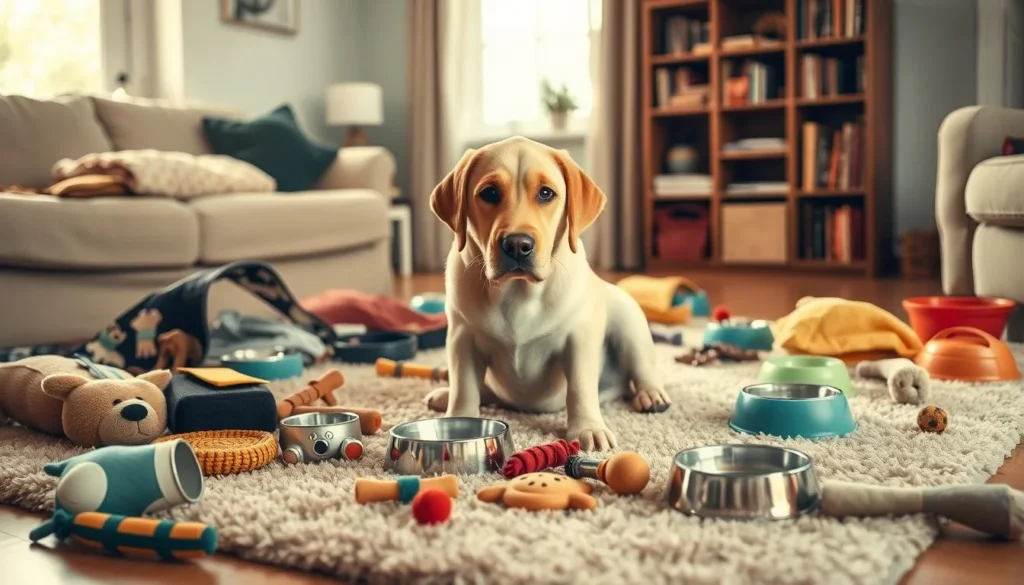
Early life shapes a dog’s outlook. Puppies that competed with littermates, spent time in crowded shelters, or faced trauma may learn to guard food and toys. A history of scarcity often teaches dogs to protect what they have.
I watch how stress and change influence behavior. New pets, guests, moving houses, or loud events can up stress and push a dog toward guarding. Small changes in routine can raise the chance that guarding starts or gets worse.
Some items gain value through interaction. If a toy is stolen, made novel, or becomes a big deal when given, its “added value” rises. Repeatedly taking items away without trades can make a dog hold on tighter and resist people’s approaches.
Medical issues often hide behind behavior shifts. Pain, dental disease, or other health problems can make a dog irritable and more likely to guard. I always recommend ruling out medical causes with a veterinarian before starting possessive dog behavior modification.
Behavior can spread between dogs in the same home. When one dog guards, another may copy the pattern. Prompt, safe management and targeted possessive dog rehabilitation can stop that transmission and protect the household dynamic.
Every dog can develop guarding, no matter the origin. For effective support I combine history, stressor assessment, and health checks. That approach helps me design practical possessive dog behavior modification and long-term rehabilitation plans that fit each dog’s needs.
how to correct possessive aggression in dogs
I teach owners how to tackle possessive aggression in dogs. Safety is the top priority, followed by clear progress. I focus on steady, reward-based training. This shifts a dog's feelings about people approaching from fear to opportunity.
I start with basic counterconditioning and desensitization. We begin at a safe distance where the dog feels no stress. I pair treats with anyone approaching, teaching the dog that closeness means better things, not loss.
I take small steps and expose the dog gradually. If it tolerates a hand at five feet, we move closer over time. If it shows signs of stress, we back off and increase the rewards. This method gives the dog control and changes its emotional response.
Practical routines help owners apply these techniques at home. One exercise is the “approach with gifts” drill. The owner tosses treats towards the dog while it plays with a toy. Then, they drop more treats as they get closer. Before touching the item, they offer several treats to keep the dog relaxed.
I teach controlled exchanges to avoid force. Swap the guarded object for a better reward. When the dog releases calmly, return the original item after a pause. This method proves exchanges are safe and rewarding.
Building trust means giving more than taking. I coach owners to give more rewards than they take. Frequent “gifts” make the dog feel safe and reduce fear. I never use dominance or punishment because it increases stress and risk.
Key exercises include place training, calm returns of items, and short, frequent approach-with-gifts practices. Each session is brief and ends positively. Over time, the dog learns to stay calm when people approach valuable items.
If a dog shows aggression—growling, snapping, or biting—I insist on professional help right away. Seek a certified dog trainer, a certified applied animal behaviorist (CAAB), or a veterinary behaviorist. They can assess risk, rule out medical causes, and create a safe plan.
| Step | Action | Expected Result |
|---|---|---|
| Distance pairing | Approach at a non-threatening distance while offering high-value treats | Dog learns approach = reward, reduced guarding |
| Gradual desensitization | Slowly decrease distance over sessions, monitor body language | Increased tolerance and lower stress responses |
| Approach with gifts | Offer treats before touching item, repeat consistently | Dog looks up, anticipates good things when approached |
| Controlled exchanges | Trade item for equal or better treat, return item after calm | Dog accepts trades without escalation |
| Trust building | Maintain higher giving vs taking ratio, avoid punishment | Stronger bond, fewer fear-based guarding incidents |
| Professional intervention | Consult certified trainer or veterinary behaviorist for severe cases | Individualized safety plan and advanced behavior modification |
When owners use steady training techniques and management, I see real change. The right mix of counterconditioning, desensitization, and supervision turns guarded reactions into calm exchanges. This keeps people and pets safe.
Identifying Subtle Warning Signs Before Aggression Escalates
I keep a close eye on dogs for small changes before they snap. Spotting these early signs helps me use the right training tips. Small changes in how they stand or act can tell a lot.
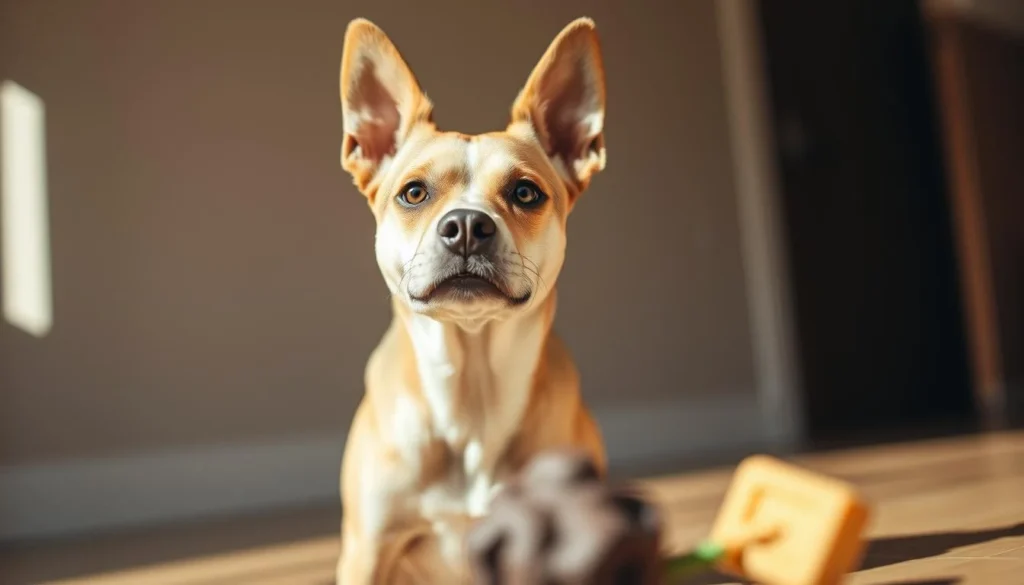
I watch for signs right before they growl. Signs like freezing, staring hard, or giving a side-eye are common. A dog might also stand over a toy or block someone's way.
I also look at how their ears and lips move. If their ears go back or lips curl up, it's a warning sign. These body language cues need attention and calm action.
Changes in eating habits can also signal possessive behavior. If a dog eats faster or hides food, it might be guarding. Hoarding toys or moving things around is another red flag.
When a dog refuses to drop something, it's a serious sign. I slow down and go back to easy training. Gentle, consistent training helps build trust.
I keep a simple log of incidents. It tracks date, time, what triggered it, the dog's reaction, and what happened before. It's easy to keep up and very helpful.
Video recordings are also key. A short clip can show subtle cues I might miss. Sharing these videos helps trainers and keeps everyone safe.
My log helps me decide when to increase supervision. I might remove valuable items or start low-level training. Accurate records guide these decisions and any work with a behaviorist.
| Warning Sign | What I Record | Immediate Action |
|---|---|---|
| Freezing or hard stare | Time, trigger item, position, people nearby | Increase distance, remove other pets, avoid sudden moves |
| Ears pinned / raised lips | Duration, body posture, prior events (guests, noise) | Offer high-value trade, lower intensity training |
| Faster eating / hoarding | Meal time, location, nearby animals, any hiding spots | Separate feeding, clear food routine, supervise |
| Refusal of drop it / leave it | Command used, distance, item value, escape attempts | Return to reward-based exchanges, use lower-value items |
| Moving items away | Where hidden, who was nearby, frequency | Remove item, secure storage, start graded exchanges |
Management Strategies to Keep Everyone Safe
I share how I manage possessive dogs at home and with clients. Simple changes in the environment and routines help. This makes training more effective.
I remove items that make dogs guard. Special toys go in a closed bin. I keep counters clear of tempting objects.
Feeding routines are strict. I don't free-feed. Bowls are picked up between meals. If food guarding happens, I feed dogs in separate spaces or behind gates.
Supervision is key when guests, children, or other pets are around. I ask visitors not to approach a dog with a chew. I keep dangerous items out of reach. Removing high-value chews helps manage risk while I work on behavior.
Short-term safety tools are crucial. Crates, baby gates, and separate rooms help control interactions. I schedule training when the house is calm. I remove provocative toys until calm behavior improves.
Reducing stress is important for long-term change. I add enrichment toys, increase walks, and use puzzle feeders. I recommend veterinary checks if guarding starts suddenly, as pain or illness can cause aggression.
I see management as essential, not optional. Without consistent controls, rehabilitation stalls and the risk of bites increases. Management keeps everyone safe while training builds lasting change.
| Strategy | What I Do | Short-Term Benefit |
|---|---|---|
| Environment adjustments | Store high-value toys, block off guarded rooms with gates | Reduces triggers and prevents sudden confrontations |
| Feeding management | Scheduled meals, separate feeding areas, remove bowls after eating | Limits food-based guarding and inter-dog disputes |
| Supervision | Monitor guest interactions, instruct visitors, remove hazardous items | Prevents escalation and protects children and adults |
| Short-term containment | Use crates, baby gates, separate rooms during training | Immediately reduces risk while behavior improves |
| Stress reduction | Increase exercise, enrichment toys, vet check for medical issues | Decreases motivation to guard and supports long-term progress |
| Integration with training | Pair management with controlled exchanges and counterconditioning | Makes possessive dog rehabilitation safer and more effective |
Positive Training Techniques to Reduce Possessiveness
I use step-by-step, reward-based methods to help dogs trade guarding for calm choices. Gentle, repeatable practice builds trust and teaches clear rules. I recommend short sessions, predictable rewards, and a higher ratio of giving than taking so the dog learns people bring pleasant outcomes.
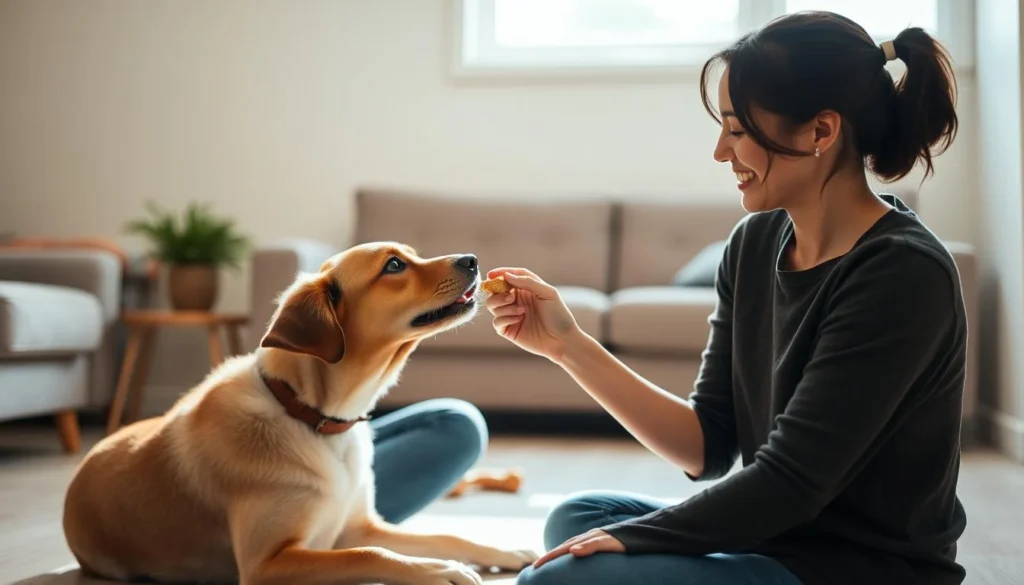
I start by teaching three reliable cues: drop it, leave it, and place. Start with low-value items, reward compliance with a tastier treat, and add a clear release cue. Practice near distractions and in different rooms until the cue works under pressure.
I follow an approach-with-gifts routine when I must move near a dog with something valuable. I walk in with tasty treats, let the dog sniff my hand, then reward before I touch the item. Repeating this creates a positive association with human approach and lowers defensive reactions.
Graded exchanges teach sharing without force. Offer an equal-or-better treat, take the item briefly, then return it. Begin at a distance the dog tolerates and shorten that gap as calm behavior holds. This trains acceptance of swaps and reduces guarding triggers.
Counterconditioning and desensitization work together in my sessions. Pair movement and approach with predictable rewards. Use mats and the Place command so the dog can chew or hold an item while family members pass. Controlled practice helps the dog accept human presence without panic.
Consistency and timing matter more than intensity. I reward calm behavior immediately and avoid coercion. Punishment hides the problem and raises bite risk. For durable change, follow possessive dog training tips that emphasize positive reinforcement, clear cues, and gradual progression.
Below is a quick comparison of common exercises I use, with purpose and progression steps to guide a training plan.
| Exercise | Purpose | Starting Steps | Progression |
|---|---|---|---|
| Drop It | Teach voluntary release of items | Offer low-value item, trade for high-value treat, mark and reward | Increase item value, add distractions, practice on walks |
| Leave It | Prevent grabbing forbidden items | Show low-value item in closed hand, reward for looking away, add cue | Place item on floor, increase distance, add passerby movement |
| Place Command | Teach calm settling while occupied | Guide dog to mat, reward calm, use short durations | Extend duration, add family members walking by, swap items calmly |
| Approach-with-Gifts | Build positive human approaches | Walk toward dog with treats, allow sniffing, reward before touching | Approach while dog has valued item, gradually reduce treat frequency |
| Graded Exchanges | Train sharing and item returns | Offer equal-or-better treat, take item briefly, return item | Shorten distance, speed exchanges, practice with more valuable items |
When progress stalls, I adjust rewards, slow the steps, or consult a certified trainer. For many owners, dog possessiveness training becomes manageable with patience and clear cues. Use possessive dog training techniques that match your dog's comfort and watch small wins add up.
Possessive Dog Training Tips for Puppies and Adults
I help owners stop possessive behavior early on. I teach them to use clear commands, keep sessions short, and reward calm behavior. This approach is key to addressing possessive behaviors in dogs. Here are some practical steps for puppies and adults that focus on safety, consistency, and trust.
Starting early: socialization and setting expectations with pups
With puppies, I start socialization right away. I teach them simple cues like "drop it" and "leave it" using low-value items. This helps them learn to release items without stress.
I use positive methods by giving treats while they chew. This teaches them that humans mean better rewards, not loss. I avoid focusing too much on new toys to prevent making them too valuable.
Adapting exercises for adult dogs with learned guarding habits
Adult dogs need a gentle start. I use distance-based training and remove triggers early on. This helps them learn calm responses safely.
When trading, I use high-value rewards to motivate them. I repeat the training, progress slowly, and manage carefully. If a dog starts guarding suddenly, I suggest a vet check to rule out medical issues.
Consistency, timing, and rewarding calm behavior
I reward calm behavior right away with treats and praise. Timing is key: rewarding immediately makes the lesson clear. I never punish growling because it hides warnings and increases the risk of bites.
Daily routines help reduce stress. I recommend scheduled feeding, enrichment, and predictable interactions. Short, frequent sessions and positive interactions build lasting trust.
| Situation | Practical Step | Why it Works |
|---|---|---|
| Puppy with new toy | Offer a treat for a swap, praise for releasing | Links human approach to better rewards and lowers item value |
| Adult dog guarding a bed | Start distance work, use high-value trade, remove other triggers | Keeps interactions safe and teaches trading without pressure |
| Sudden guarding behavior | Pause training, schedule vet exam, return to conservative plan | Excludes medical causes and avoids reinforcing pain-driven guarding |
| Owner reinforcement errors | Stop praising guarding, reward calm moments, keep short sessions | Removes accidental rewards and increases positive exchanges |
| Household routine | Set feeding schedule, create enrichment plan, supervise exchanges | Predictability lowers stress and reduces guarding incentives |
Managing Possessive Dogs in Multi-Pet Households
I help families with more than one dog. We plan ahead, watch for signs of trouble, and follow clear rules. It's all about safety and training that meets each dog's needs.
Preventing inter-dog guarding and ritualized aggression
I start by finding out what causes fights. Things like favorite toys, spots to rest, and food bowls can lead to trouble. I separate these items and keep an eye on how each dog acts.
Ritualized aggression, like stiff stares or low growls, means stress. It's important to catch this early to prevent fights. But we must act fast to manage it.
Separate resources and supervised shared activities
I suggest different places for eating and timed meals. Make sure to pick up toys and bones when you can't watch. Dogs need their own space, like crates or gates.
For times when dogs are together, I plan activities that don't make them feel left out. Walk them side by side or give treats at the same time. This way, they both feel included.
Reinforcing positive relationships between pets without triggering guarded items
I focus on activities that don't involve competition for things. Games with scents, walks, and short play sessions with neutral toys help build trust. I also use counterconditioning to teach dogs that another dog nearby means good things.
If a dog guards something directly, I call in a behaviorist. They create a plan for rehabilitation. This plan includes management, desensitization, and training steps.
| Issue | Immediate Management | Training Approach |
|---|---|---|
| Food guarding between dogs | Feed in separate rooms or crates | Teach distance-based exchanges and calm-wait cues |
| Toys and chews causing fights | Remove high-value items when unsupervised | Practice graded sharing with low-value items first |
| Guarding of favorite resting spots | Create multiple safe beds and gated zones | Reward calm tolerance and teach place cues |
| Ritualized aggression signs | Separate dogs and reduce triggers immediately | Countercondition warnings and reinforce relaxed signals |
| Dog-directed guarding toward another dog | Use management and supervised interactions only | Consult a behaviorist for a multi-dog plan |
What Not to Do: Common Mistakes That Make Possessiveness Worse
Many owners try quick fixes for a dog's food or toy guarding. These fixes often worsen the problem. I focus on safe, practical steps and highlight common errors to help you avoid them.
Never punish growling. Growling is a warning sign. Punishing it can make the dog silent. This silence can lead to a sudden bite. It's a common mistake I see.
Don’t yank items or force dominance. Taking a toy or food can make the dog more protective. Using physical tactics doesn't solve the problem. It can even make things worse. Guests and family members won't have the same authority, leaving safety gaps when you're not there.
Avoid repeated “play grabs” with food and chews. Taking treats back might seem like teaching the dog they're not valuable. But it actually makes the dog more protective. This is a big mistake in training.
Remove tempting items rather than leaving them out. Items like socks or small toys can cause trouble. Removing them is a simple safety step. It helps during early training.
Don’t mislabel every reaction as guarding. Leash reactivity, fear, and guarding can look similar. Getting the cause wrong can lead to the wrong actions. Accurate observation and, when needed, a behavior assessment are key.
I suggest a safety-first approach: control access, prevent risky interactions, and use positive trades. Avoid these common mistakes to keep your efforts productive and safe.
Step-by-Step Plan to Work With a Possessive Dog
I start by watching the dog's behavior to ensure safety. I look for signs like freezing and side-eye. If things get worse, I note growling, lunging, or biting.
I keep a log of incidents and record videos. This helps me track what triggers the behavior and how often it happens. Before starting any training, a vet checks for any medical issues.
Next, I set up short-term safety measures. I remove things that might upset the dog, clean up bowls after meals, and feed dogs in separate areas. I also use gates or crates to block off spaces the dog guards.
I teach everyone in the household clear rules. This keeps everyone safe around the dog.
I then start a training plan that builds on small successes. I begin by letting the dog get treats at a safe distance. I reward them for staying calm. Then, I gradually move closer and increase the number of times I approach.
Once the dog gets used to being approached, I teach them to exchange items for treats. I use cues like drop it and leave it. I practice these cues in different places before adding real-life situations.
I mix training with management until the dog's behavior is predictable. I increase the dog's exposure to triggers while keeping an eye on them. As the dog becomes calmer, I slowly remove the safety measures.
If the dog shows signs of aggression, I call a certified professional. I look for experts from the International Association of Animal Behavior Consultants or the Certification Council for Professional Dog Trainers. If progress slows down or if there are multiple dogs, I also seek help from a professional.
Here's a quick checklist for working with a possessive dog. It shows how to correct possessive aggression in dogs in simple steps.
| Phase | Immediate Actions | Training Focus | When to Call a Pro |
|---|---|---|---|
| Assessment | Log incidents, video, vet exam | Identify triggers, severity | Any bite or repeated escalation |
| Short-term Management | Remove risky items, separate feeding, gates | Stabilize environment, reduce access | Dog guards essential spaces or people |
| Distance Work | Approach-with-gifts at safe distance | Build positive human approaches | Dog cannot remain calm at distance |
| Controlled Exchanges | Offer better treat, brief take-and-return | Teach exchanges and release cues | Progress stalls or multiple triggers exist |
| Proofing | Practice in varied settings, supervised real-life tests | Generalize cues and reliability | Complex household dynamics or risk remains |
| Maintenance | Ongoing monitoring, logs, periodic checks | Slowly reduce management as safe | Relapse or sudden behavior change |
Conclusion
Resource guarding is a natural behavior in dogs but can be dangerous if not addressed. The best approach combines management with positive training. Teaching dogs to drop items and use calm responses is key.
Punishing growls or using dominance can make things worse. Instead, use gifts and trade items for better rewards. Short, consistent training sessions help build trust and reduce guarding.
Always take safety steps first: remove triggers, separate feeding, and see a vet if there's pain. If growling or biting happens, get help from a certified trainer or vet behaviorist. Start with safety, then add management and training.
Watch for subtle signs and keep a safe mindset. Use consistent, positive training. This way, you and your dog can live a happier, safer life together.

